Lately, readers have been asking about the Trek Belleville WSD mixte. It has been out for about a year and looks promising in pictures, but what is it like in person? I had noticed this bicycle earlier at one of my local bike shops - the Wheelworks in Somerville, MA - and recently had a chance to try it.
The Trek Belleville mixte is a "real" mixte - in the sense that it is built with twin lateral stays that extend from the head tube to the rear dropouts. The bicycle reflects the ideas of the French constructeurs (or, more likely, the contemporary builders who emulate the original constructeurs) in that it is fully equipped with fenders, front and rear racks, and dynamo-powered lighting. However, unlike classic mixtes with their elegant lines and lugged steel construction, the Trek Belleville's frame is made of a strangely thick, welded cromoly tubing. The tubing is so chunky in fact, that I was certain the bike was aluminum until I was corrected. In industry photos the chunkiness is easily disguised with good lighting and careful choice of angles. But in person, the bicycle looks like what it is: a somewhat clumsy mass-produced bike fitted with some admittedly impressive extras. Trek also promotes the "eco-design" of this model, which you can read about here.
I think that one of the most successful aspects of the Trek Belleville is the colour scheme and graphics. We like to fool ourselves into thinking that this stuff does not influence us, but it does. The slate-blue and cream colour combination with subtle red accents is harmonious, beautiful, and nostalgic. It dominates the aesthetics of the bicycle, distracting the eye from its less appealing aspects.
Trek also used a vintage headbadge for the Belleville, which goes nicely with the classic theme.
The Trek Belleville uses a threadless stem and Porteur-style handlebars. Both the stem and the handlebars are painted body colour, which is nice. A Porteur-style front rack is attached to the fork.
Close-up of the stem, grips, shifter and the points where the lateral stays attach to the head tube. While I do not normally like threadless stems and integrated handlebars, I think here the look is appealing. However, the design makes it impossible to adjust stem height and the angle of the handlebars, which is problematic.
The front rack is quite elegant, as well as smoothly integrated with the body of the bike. The tires are Bontrager, cream with black sidewalls.
The rear rack is nice as well. I don't remember the weight rating, but it was considerable. One thing I noticed, is that the attachment points are set back from the rear dropouts - presumably because the chainstays are otherwise not long enough to accommodate a rack?
The Trek Belleville is fitted with an internally geared hub (Shimano Nexus 3-speed), caliper brakes, a decent-looking crankset, touring-style pedals, and a body-coloured chainguard.
The front dynamo hub is a Shimano (I did not see the model name), and the lights used are Spanniga. The headlight is a Spanniga Micro, mounted on right stay of the front rack.
The tail light is a Spanniga Eclipse, attached to the rear rack. I have not tried the lights, as it was daytime, but I have heard good things about these models.
The saddle has a faux-handsewn leather look to it and feels like a typical padded vinyl saddle. I have read that it was designed to be disassembled and recycled after use, though I am not clear on the details.
The Trek Belleville mixte comes in two frame sizes - 43cm (17") and 50cm (20"). I am fairly certain that I tried the smaller frame, because I had to raise the saddle half a foot from its original position in order to ride the bike (note that the pictures here show the original position, not the raised position). However, while the seat tube was short, the rest of the bicycle seemed quite large. The step-over was high and bringing my leg over took some careful negotiating. And the reach from the saddle to the handlebars was characteristic of a larger frame.
I would estimate the weight of the Belleville mixte around 35lbs. Very reasonable, considering the steel tubing and all the extras.
Preparing to test-ride the bike, I walked it off of the sidewalk curb - at which point it made loud clunking noises. Upon investigation, we discovered that the fenders were wobbly - and the cause seemed to be in the design of the attachment points, rather than in the assembly. This could be an issue when riding over bumps or potholes.
I test-rode the Trek Belleville mixte briefly, and I apologise for my disgraceful "salmoning" - it was only done for the photo. As reflected in the picture, the first thing I noted was the unusually generous width of the handlebars - I almost felt as if I were holding the edges of a hula hoop. Maybe this was the cause of the strange feel to the steering, because I found the front end to be "aloof" - almost as if it was receiving its steering instructions via a third party rather than from me directly. I wonder whether it would handle differently with a front load, but that is not something I was able to test. Otherwise, the ride felt okay - with the exception perhaps of too much pressure on my hands despite the upright handlebars.
Of all the other bicycles I have test ridden, the Trek Belleville mixte is the most similar to the Specialized Globe Haul I tried last year. Both feature mixte-style construction and integrated racks, and are roughly in the same price range. Comparing the two, my impression is that the Globe Haul's construction is of somewhat better quality and I preferred the feel of the Globe's ride. In pictures and from a distance, the Trek Belleville comes across as a prettier and more classic-looking bicycle, but in person this is not so. As for comparing the Trek Belleville WSD to traditional, classic mixtes - there is something clumsy about the Trek, as a result of which it does not resemble the real deal despite the twin-stay construction.
The racks on the Trek Belleville mixte are impressive, and the fact that dynamo lighting comes standard on this bicycle is nothing short of amazing. The gorgeous paint job is also to be commended. But despite all the extras, the bicycle has an awkward and flimsy feel to it in person. The current retail of the Trek Belleville mixte is around $650, and the Wheelworks in Somerville has it on sale at the moment for a lower price. Regardless of what I think of the Trek Belleville, one thing is for sure: A production bicycle with racks and dynamo lighting is a step forward for the industry that is in itself worth applauding.
|
|
|---|
Monday, November 1, 2010
Mixed Impressions: a Look at the Trek Belleville WSD Mixte
Labels:
bicycle reviews,
fenders,
local bike shops,
mixte
Subscribe to:
Post Comments (Atom)

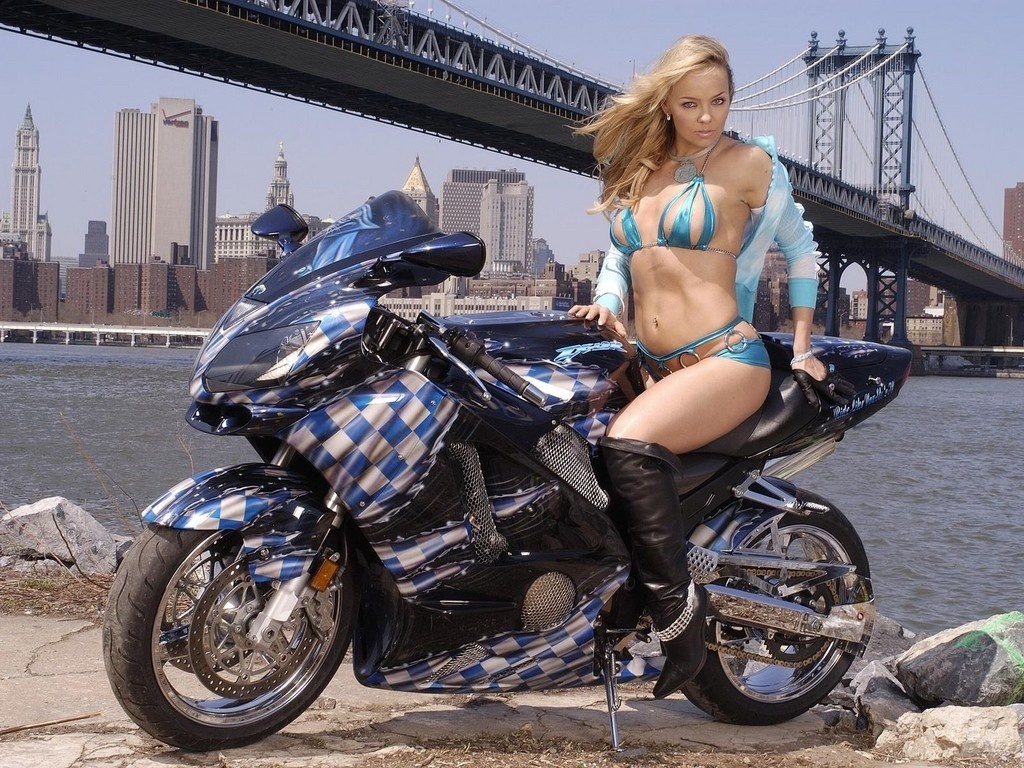





.jpg)

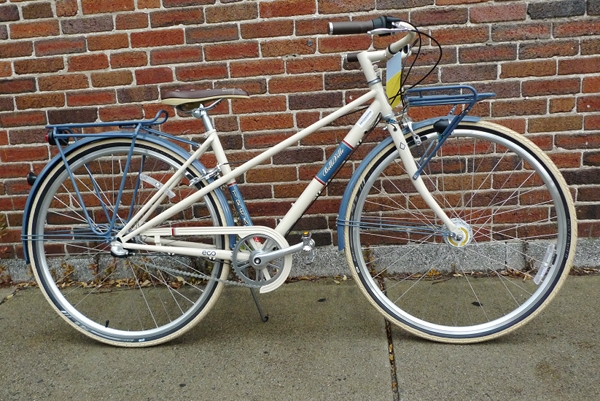
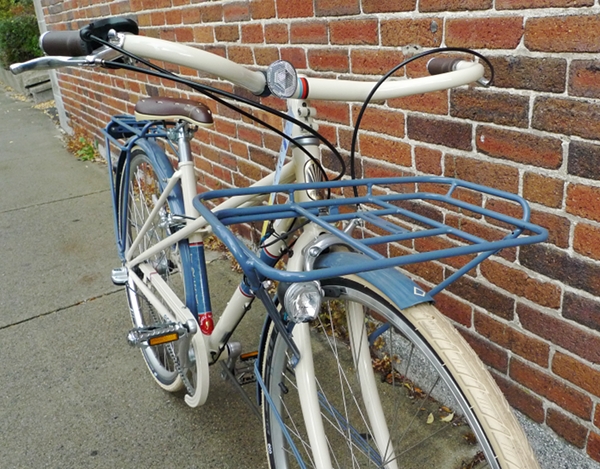
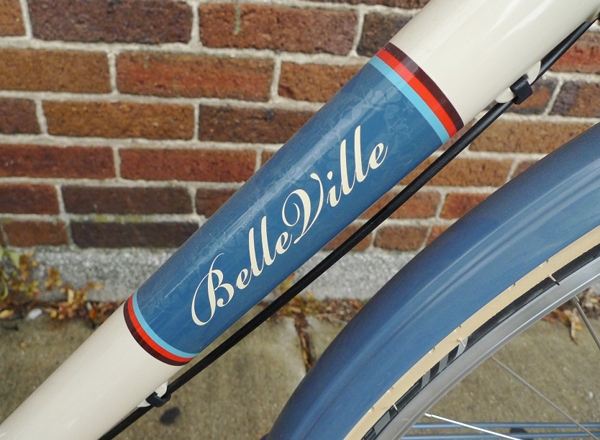
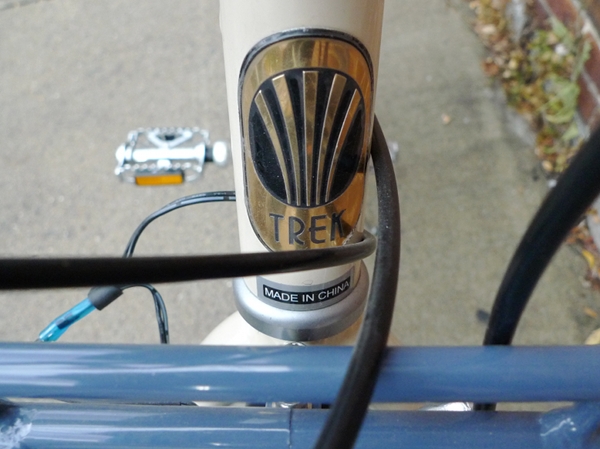
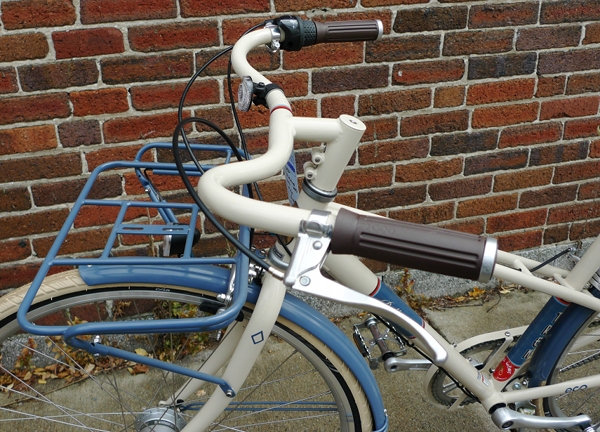
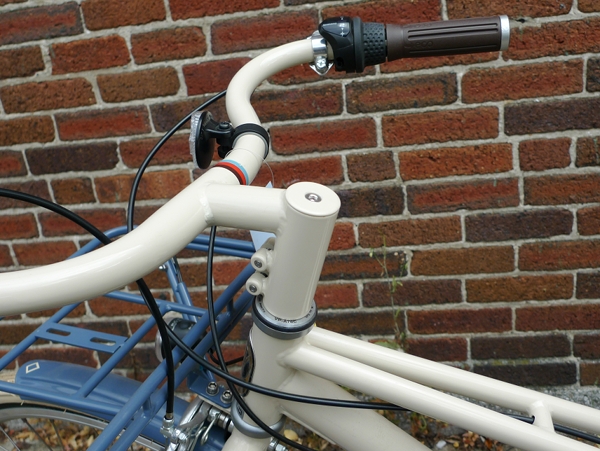
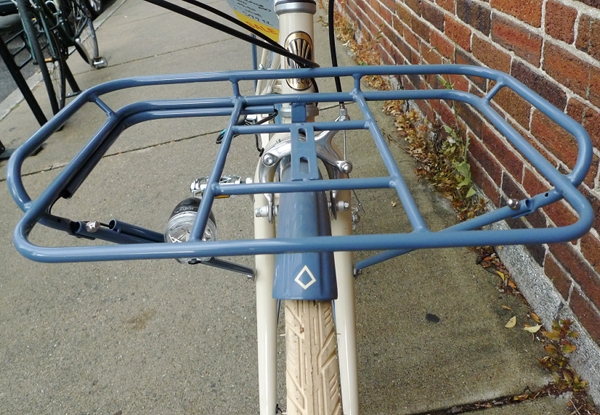


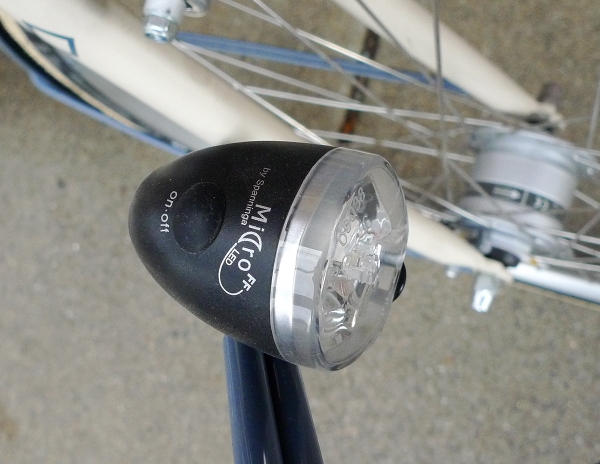

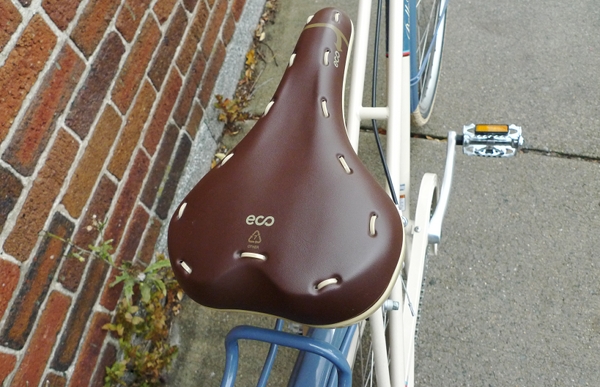
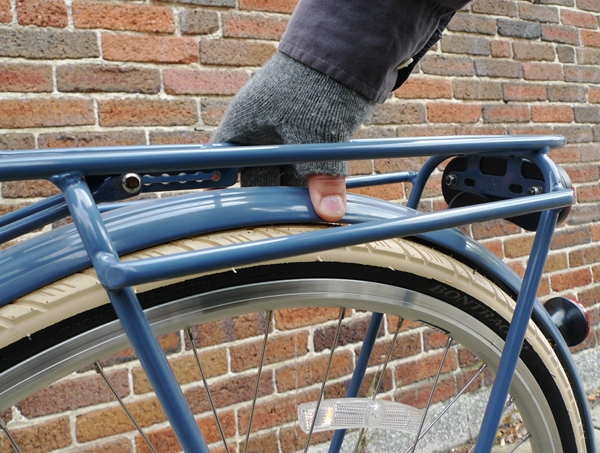







0 comments:
Post a Comment